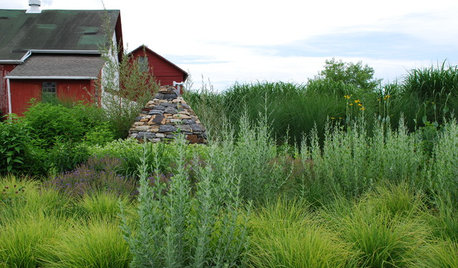Another gmo problem?
henry_kuska
11 years ago
Related Stories

FURNITURESlipcovers: Problem Solvers With Style
9 Great Ways to Change Up Your Look With the Ever-Practical Slipcover
Full Story
REMODELING GUIDESThe Hidden Problems in Old Houses
Before snatching up an old home, get to know what you’re in for by understanding the potential horrors that lurk below the surface
Full Story
FEEL-GOOD HOMEBack Problems? Try Putting Your Feet Up
Consider these alternatives to that one-size-doesn’t-fit-all sofa to avoid slumping and spinal stress
Full Story
DECORATING GUIDESSolve Privacy Problems With Window Film
Let the light in and keep prying eyes out with an inexpensive and decorative window film you can apply yourself
Full Story
LANDSCAPE DESIGNProblem Solving With the Pros: An Abundant Garden Stretches Its Means
Swaths of resilient, eye-catching plants thrive with little care or resources in the landscape of a Pennsylvania farmhouse
Full Story
LANDSCAPE DESIGNProblem Solving With the Pros: How to Build a Garden in an Urban Canyon
Skyscrapers, noise and deep shade create an unlikely sweet spot for a timeless green retreat in New York City
Full Story
HOUSEKEEPING10 Problems Your House May Be Trying to Show You
Ignore some of these signs and you may end up with major issues. We tell you which are normal and which are cause for concern
Full Story
GARDENING GUIDESSolve 3 Common Landscape Problems — With More Plants
Sometimes the best defense is a good offense
Full Story
DECORATING GUIDES5 Pet Problems Solved by Design
Design-Friendly Ideas for Pet Beds, Bowls, Doors — and yes, the Litter Box
Full Story
LANDSCAPE DESIGNProblem Solving With the Pros: Rustic Simplicity in a Country Garden
Editing thoughtfully and adding some magic result in a timeless weekend retreat
Full Story


nc_crn
henry_kuskaOriginal Author
Related Discussions
another leaf another problem?
Q
another k46 problem
Q
Another possible problem?
Q
Another Miele problem...
Q
nc_crn
TheMasterGardener1
nc_crn
henry_kuskaOriginal Author
nc_crn
henry_kuskaOriginal Author
nc_crn
lazy_gardens
henry_kuskaOriginal Author
nc_crn
henry_kuskaOriginal Author
nc_crn
henry_kuskaOriginal Author
nc_crn
henry_kuskaOriginal Author
nc_crn
henry_kuskaOriginal Author
nc_crn
nc_crn
henry_kuskaOriginal Author
henry_kuskaOriginal Author
pnbrown
nc_crn
nc_crn
pnbrown
nc_crn
henry_kuskaOriginal Author
nc_crn
Kimmsr
TheMasterGardener1
Lloyd
henry_kuskaOriginal Author
nc_crn
henry_kuskaOriginal Author
nc_crn
henry_kuskaOriginal Author